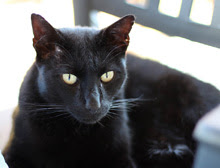One of our neighbors has beautiful calla lilies in her garden every year.
So here is one of the first photos (that I'm willing to share) that I worked on in Lightroom. Right away, I've noticed two things. First, the raw format is what they say. Each image is huge and contains much more detail than a camera-processed jpeg. That gives me a lot more to work with from the start.
Second, I'm really seeing a difference in my lenses. I used my 100mm macro lens to take the close-up shots I've been posting recently. It's a much better lens than the 18-55mm zoom kit lens I used to take today's photo. The images taken with the fixed lens are much sharper than those taken with the zoom, and it's very noticeable in the raw format.
Otherwise, I'm trying to cope with all the other aspects of the new program. In addition to learning how the different controls affect the images, I'm trying to adjust to the interface and navigation within the program itself (it's like work!). File handling is a little more complex than I'm used to. Storage will be a challenge, as the raw images are coming in at around 20mb each. Ken has a large external hard drive he's not using, so I may plug that in and use it for photo storage.







Well done for ploughing your way through this. To my eye the image looks great. It would be interesting to see a before and after editing, but no doubt the size of the raw image is why you haven't done that already.I'll check out some images on line.
ReplyDeletegaynor, thanks! The raw images aren't really publishable; they have to be processed one way or another. One thing I read compared raw images to film negatives. They need to be processed to see the pictures.
DeleteHi Walt. I don't know if you remember that years ago, back when a friend of mine was with them from the beginning, I suggested that if you ever wanted really good prints (on a great selection of paper or other support, like metal or acrylic), there was Darqroom that took raw images. Well, they went out of business about 18 months ago. I just looked them up and it looks like http://www.artdeqo.fr/ is the successor. I haven't tried them, but if you want fine quality prints, they might be the place to go. Your photos are worth it!
ReplyDeleteellen, I rarely print my photos, but I'll have a look. Thanks!
DeleteGood luck! You are a stick-to-it, detail-oriented kind of guy, so you'll master this, for sure :)
ReplyDeleteI think you'll really get to like LR once you can find your way around it, Walt. I've been using it for years, but am by no means an expert at it. There are just too many possibilities. :) Scott Kelby has written quite a few books on LR that I found very helpful. As to your picture above, I think the whites look a bit blown out/overexposed. In my version of LR (4... something) you can easily remedy that in the Development screen > Exposure and/or Highlights.
ReplyDeleteelgee, yes, the flowers are blown out. I brought them back a little, but liked the effect so I tried not to overdo it.
DeleteThat's a beautiful photo and I love the combination of callas and peonies.
ReplyDeleteLightroom is great once you get the hang of it. I've been using it since it came out, many versions ago. Three things I can suggest to you are:
ReplyDelete1) Don't use raw for everything. I only use raw when I am shooting something with very bad or contrasty or questionable lighting, when I'm pretty sure I'll want to crop heavily, or more commonly, when it's an important shot that I know I will want to keep a lot of detail. If you are not making big prints (11x14 and up) and mostly viewing the pictures on a computer monitor, you won't gain much at all by using raw/DNG files. For most uses, JPG out of the camera is fine. I shot almost 2,500 pictures during our visit to France and they were all JPG.
2) Work on a few representative images of each type, JPG and DNG, in the Develop module to see if there are common settings for vibrance, clarity, sharpening, etc. that you can use most of the time as a starting point. Make presets for these settings and apply them during import.
3) By far the biggest thing to get right is your keyword set. Get this right and Lightroom will make it really easy to find stuff you shot years ago. Apply keywords during import if you can. The spray can is awesome for keywording photos after import.
One more thing... I always import the originals to a different drive than I use for the exported images. That gives you a kind of automatic backup.
ReplyDelete"Storage will be a challenge,"....
ReplyDeletePauline bought me a two terrorbyte drive for Christmas...
I think, if I was using Raw all the time, I'd need one EVERY year!!
Re: Tom S's point one... about not using Raw all the time... does your camera allow you to switch to Raw quickly...
with my Pentax K7, the Green button allows me to shoot a preset... currently set as Raw+JPG... takes Raw, saves as both...
when back here, I can discard the Raw if I am happy with the JPG... that saves on space.
tom & tim, thanks. Good advice. I can see the storage issues looming, especially for backup, so I appreciate your ideas about not shooting exclusively in raw. Also, I've read about using presets for importing and am keeping my eyes out for those common things. Clarity is one of them that I notice already.
ReplyDelete